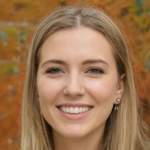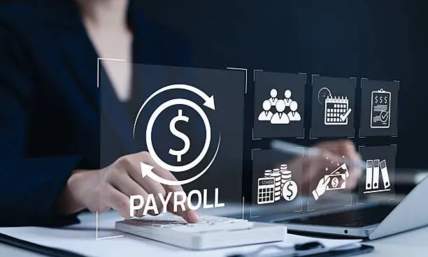What Is The Accounting Cycle? - The Full Guide
The accounting cycle is defined as the process of analyzing and recording the accounting of a specific company. It is usually a relatively simple 8-step process that happens when a transaction has occurred and concluded with the company’s overall financial statements.
There are eight key steps involved in an accounting cycle including journal entries, any posts to the general ledger and trial balance calculations. You will also need to make any adjustments to the relevant entries before concluding your overall financial statements.
Also read: Can I Pay Off My Mortgage Early?

How An Accounting Cycle Works
A standard accounting cycle sets out a method of rules that ensure the conformity of your company’s financial statements. Using computerized accounting methods, the uniformity of this process has become far easier to engage with. These computer systems have also helped to drastically reduce any errors.
Nowadays, the vast majority of computer software will automate the cycle which culminates in less human error occurring during the calculative process.
Also read: What is a Bridge Loan?
Key Steps Of The Accounting Cycle
There are eight specific steps involved in an accounting cycle. These include the following:
-
Identifying Transactions: A company will begin its cycle by identifying the transactions made during this period any recording which of these transactions comprise an event that needs bookkeeping. These transactions could constitute a payment to a vendor, a sale, a refund etc.
-
Recording Any Transactions In A Journal: After you have ascertained which payments require bookkeeping, you will need to record these transactions in a journal .These entries are based on your invoices, bank statements, or any other recognition of the sale.
-
Posting: Once you have recorded your transactions, you can post them to the general ledger. This provides an overall breakdown of your accounting events.
-
Adjust Trial Balance: After you have posted your journal entries to the ledger accounts, you will have an unadjusted trial balance. This balance will make sure that the total debits are equivalent to the total credits listed in your financial records.
-
Worksheet: The fifth step of the cycle consists of you analyzing the worksheet and making any relevant adjustments to your entries. This worksheet will ensure that your debits and credits are both the same value. If there are any differences, then you will need to make the relevant adjustments.
-
Adjust Your Journal Entries: You should make any adjustment to your journal entries on the basis of any corrections that you have made on your worksheet for this period of time.
-
Issue Your Financial Statements: After you have posted your adjusted journal entries, you should prepare your trial balance followed by any formal statements.
-
Close The Books: Finalize your accounts, revenues and expenses with closing entries. These include transferred net income into any retained earrings.
Also read: Checklist For Moving Into Your New House

How Is The Accounting Cycle Timed?
A cycle is started and completed within a specific period of time known as the accounting period. After this time, financial statements are prepared for this period of time. These accounting periods will vary depending on a variety of factors. However, the annual period is the most commonly used type of accounting period. During this cycle, a number of transactions will have occurred and require recording.
At the end of each financial year, statements will be prepped which are required by law. Companies will be required to submit their statements by specified dates. All companies that operate within the United States will be required to file financial statements, registration statements, periodical reports and potentially other forms to the U.S. Securities and Exchange Commission. Thus, the reporting cycle will run around the required dates for each form.
Also read: How to Apply For a FHA Loan?
The Budget Cycles Versus The Accounting Cycle
These two cycles differ for a number of reasons. The accounting cycle typically focuses on historical events to ensure that any financial transactions that have occurred are reported accurately. Comparatively, a budget cycle refers to any future operating performance whilst planning for future transactions that the company will engage in. Thus, the accounting cycle produces reports for external use whilst the budget cycle is often used for managerial purposes within the company itself.
Also read: Pay Yourself When You Have An LLC
Understanding The Eight Steps Of The Accounting Cycle
The accounting cycle is an eight step process that is imperative to know for all bookkeepers. As mentioned, it breaks the process down into eight basic steps. Fortunately, these steps are usually automatically generated through computerized accounting software using the relevant technological programs. However, having a manual awareness of these steps can be important for smaller businesses and accounts who work on books without any technical support.
This eight-step cycle begins with the recording of each transaction that has occurred within the company and culminates in a comprehensive financial report of the company’s activities within a specific timeframe.
The vast majority of companies will use specified software in order to automate their accounting cycle. This allows them to program dates and receive reports without human error. Depending on which accounting system the company uses, less or more technical involvement will be required. Nowadays, the vast majority of bookkeeping involves software, however, a bookkeeper may need to manually intervene at specific points in order to stabilize the books and balance them accordingly.
Each company will be required to modify their eight-step cycle in specified ways in order to adjust to their individual business model and internal procedures. These adjustments often include modifications for accrual accounting vs cash accounting which is an area that can cause issues.
Companies can also choose whether to opt for single-entry accounting or double-entry accounting. The latter is required for companies to build all of the three required financial statements: the balance sheet, the cash flow statement and their income statement.

Conclusion
To conclude, the accounting cycle is an eight step process that requires companies to report their income within a specific period of time. This is usually annual although this can vary from company to company.
Fortunately, the vast majority of accountants will use computerized software to report their accounts which reduces the capacity for human error whilst drastically reducing the effort required to perform this process and complete the accounting cycle.
Pay stubs are important documents when it comes to the topic of finance and it is vital that a reliable way of generating pay stubs is at your disposal. That is where our pay stub generator comes into play. Simple and high-quality pay stubs are available without any hassle.















